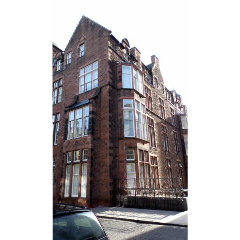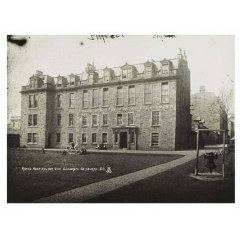
High School Yards today
High School Yards, Edinburgh EH1 1LZ
The Edinburgh University Settlement (EUS) was established by the University of Edinburgh on this site in 1905. The founding was part of a larger settlement movement in the UK and US, in which ‘settlement houses’ were established in poorer areas where middle-class volunteers would live and attempt to improve the lives of locals. Professor Richard Lodge, one of the founding members of EUS, remarked that Edinburgh was ‘a fair city but it had some foul spots on it, and if the members of the University could do anything to brighten the lives and bring sympathy and gladness into some of the homes in these darker spots, they would be doing something to repay the debt which the town’s college owed to city.’ Both students and staff of the University lived and worked in the EUS, where they undertook a range of educational and outreach initiatives, including founding Scotland’s first school of art therapy, one of the first ever thrift shops, computer skills training, women’s education, and community volunteering. The Edinburgh University Settlement closed in 2010 due to severe financial difficulties but many of their projects have managed to continue after finding alternative sponsorship.

High School Yards today
Photo credits: Ema Smekalova, Lucy Ridley


